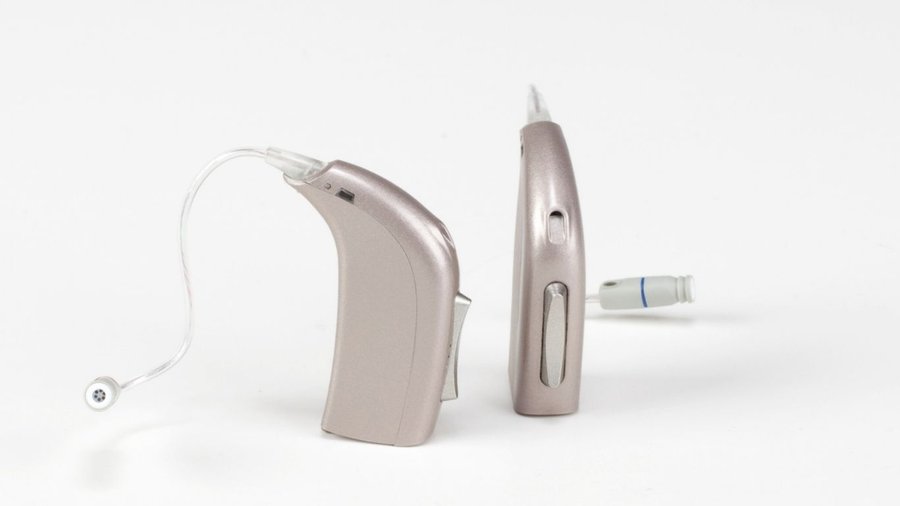How Hearing Aids Work: The Technology Behind the Devices
Hearing aids are life-changing devices that help millions of people worldwide reconnect with the sounds around them. Whether it’s the laughter of loved ones, the chirping of birds, or the sound of music, hearing aids make these experiences possible for those with hearing loss. Have you ever been curious about how hearing aids work? What kind of technology drives these compact gadgets that rest behind or within your ear?
In this article, we’ll explore the fascinating technology behind hearing aids, explain the hearing aids working process in simple terms, discuss different types of hearing aids, common challenges users face, and showcase the newest developments influencing the future of hearing devices.
What Are Hearing Aids?

Hearing aids are digital instruments created to enhance hearing by increasing sound volume. Hearing impairment may result from aging, prolonged noise exposure, illnesses, or hereditary causes.
The main goal of hearing aids is to make sounds louder and clearer, compensating for the frequencies where hearing is diminished. This helps users communicate better and enjoy a richer auditory experience.
How Hearing Aids Work: The Core Technology
At the heart of every hearing aid is a simple but powerful process involving sound capture, processing, and delivery. Here’s a step-by-step explanation of how hearing aids work:
1. Sound Capture
The microphone in the hearing aid captures sound vibrations from the surroundings. Modern hearing aids often use multiple microphones to capture sounds from different directions, which helps in distinguishing speech from background noise.
2. Conversion to Digital Signals
Once the sound is captured, it is converted from analog sound waves into digital signals by an internal converter. This digital conversion allows the hearing aid’s processor to analyze and manipulate the sound with great precision.
3. Signal Processing and Amplification
The processor, which is essentially a tiny computer chip, analyzes the digital signals. It amplifies frequencies where the user has hearing loss and reduces unwanted noise. Advanced algorithms help enhance speech sounds while suppressing background noise, making conversations clearer.
4. Delivery to the Ear
Finally, the processed and amplified sound is converted back into an analog signal and sent to the receiver (speaker) inside the hearing aid. The receiver delivers the sound into the ear canal, where it stimulates the inner ear and is interpreted by the brain.
Types of Hearing Aids and Their Working Differences
Hearing aids come in various styles, each suited to different types and degrees of hearing loss, lifestyle preferences, and cosmetic concerns. Here are the main types and how their working differs:

1. Behind-the-Ear (BTE) Hearing Aids
Behind-the-ear (BTE) hearing aids are robust and appropriate for every degree of hearing loss, ranging from slight to severe. Their larger size allows for bigger batteries and more features.
2. In-the-Ear (ITE) Hearing Aids
In-the-ear (ITE) hearing aids sit fully within the outer ear. They are less conspicuous compared to BTE styles and offer easier handling.
3. In-the-Canal (ITC) and Completely-in-Canal (CIC) Hearing Aids
These compact hearing aids are designed to fit partially or entirely inside the ear canal, providing a highly unobtrusive appearance. Their small size makes them discreet but sometimes limits battery life and features.
4. Receiver-in-Canal (RIC) Hearing Aids
RIC hearing aids have a small receiver placed inside the ear canal, connected by a thin wire to the main body behind the ear. This design allows for a natural sound quality and is popular for mild to moderate hearing loss.
Hearing Aids Working in Different Environments
One of the most impressive aspects of modern hearing aids is their ability to adapt to different listening environments. This adaptability is a key part of how hearing aids work to provide a natural and comfortable listening experience.
- Quiet Environments: In quiet settings, hearing aids amplify soft sounds without making louder sounds overwhelming.
- Noisy Environments: In loud surroundings, by employing directional microphones and noise-cancelling algorithms, hearing aids concentrate on voices originating ahead of the wearer while minimizing ambient noise.
- Music Listening: Some hearing aids have special music programs that preserve the quality of music, avoiding distortion common in speech-focused amplification.
- Wind Noise Reduction: Advanced hearing aids can detect wind noise and reduce it to improve comfort outdoors.
Challenges in Hearing Aids Working and How Technology Helps
While hearing aids are incredibly helpful, users sometimes face challenges such as:

- Background Noise: Ambient noise makes separating conversation from surrounding sounds challenging in busy environments.
- Feedback or Whistling: This happens when the amplified audio escapes and is re-detected by the microphone, causing a high-pitched sound.
- Battery Life: Battery longevity can be bothersome due to the need for regular replacements.
- Comfort and Fit: Poor fit can cause discomfort or reduce sound quality.
How Technology Addresses These Challenges
- Noise Reduction Algorithms: Contemporary hearing aids utilize advanced noise filtering methods to lessen undesirable sounds.
- Feedback Cancellation: Electronic feedback control reduces the occurrence of whistling noises.
- Rechargeable Batteries: Many hearing aids now come with rechargeable lithium-ion batteries, offering long-lasting power and convenience.
- Custom Molds and 3D Printing: Advances in ear scanning and 3D printing allow for perfectly fitting custom earmolds, improving comfort and sound delivery.
Maintenance Tips for Optimal Hearing Aids Working
Consistent upkeep is crucial to ensure your hearing aids continue functioning optimally:
- Keep Them Dry: Moisture can damage electronic components. Use a hearing aid dehumidifier overnight.
- Clean Regularly: Remove earwax and debris from microphones and receivers using a soft brush or cleaning tool.
- Replace Batteries Timely: For non-rechargeable models, change batteries before they run out.
- Store Properly: When not in use, keep hearing aids in a safe, dry place.
- Regular Check-Ups: Visit your audiologist regularly to check device performance and update programming if needed.
Latest Trends and Technologies in Hearing Aids (2025)
The field of hearing aids is rapidly evolving, with new technologies enhancing the hearing aids working process and user experience.

1. Artificial Intelligence (AI) Integration
Artificial intelligence allows hearing aids to adapt based on the wearer’s surroundings and habits. These smart devices can modify settings instantly, enhancing speech understanding and easing listening strain.
2. Binaural Hearing and Wireless Synchronization
Modern hearing aids communicate wirelessly with each other, allowing synchronized sound processing. This binaural hearing improves sound localization and speech understanding in noisy environments.
3. Rechargeable Lithium-Ion Batteries
Rechargeable batteries have become the standard in premium hearing aids, offering up to 24 hours of use on a single charge and eliminating the need for frequent battery replacements.
4. Bluetooth and Smart Device Integration
Bluetooth technology enables hearing aids to wirelessly receive audio streams from smartphones, televisions, and various other gadgets. Many hearing aids now support hands-free phone calls and can be controlled via smartphone apps.
5. Auracast™ and Public Audio Streaming
Auracast™ technology enables hearing aids to connect to public audio broadcasts in places like airports, theaters, and conference centers, improving accessibility and user experience.
6. Future Innovations: Neurotechnology and Brain-Computer Interfaces
Researchers are exploring ways to integrate hearing aids with brain signals, allowing devices to adapt based on the wearer’s focus and cognitive load. This could revolutionize hearing aid personalization and effectiveness.
Conclusion
Understanding how hearing aids work reveals the incredible technology packed into these tiny devices. From capturing sound to delivering clear, amplified audio tailored to your hearing needs, modern hearing aids are sophisticated tools that significantly improve quality of life. The latest trends in AI, connectivity, rechargeable power, and future neurotechnology continue to push the boundaries of what hearing aids can do.
If you or a loved one is considering hearing aids, knowing how they work can help you make informed decisions and appreciate the technology that restores the joy of hearing.
For more updates on hearing health and technology, keep visiting our site for the latest blogs and expert insights. Don’t forget to follow us on social media to join our community and stay informed!






